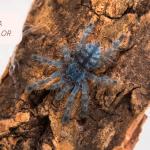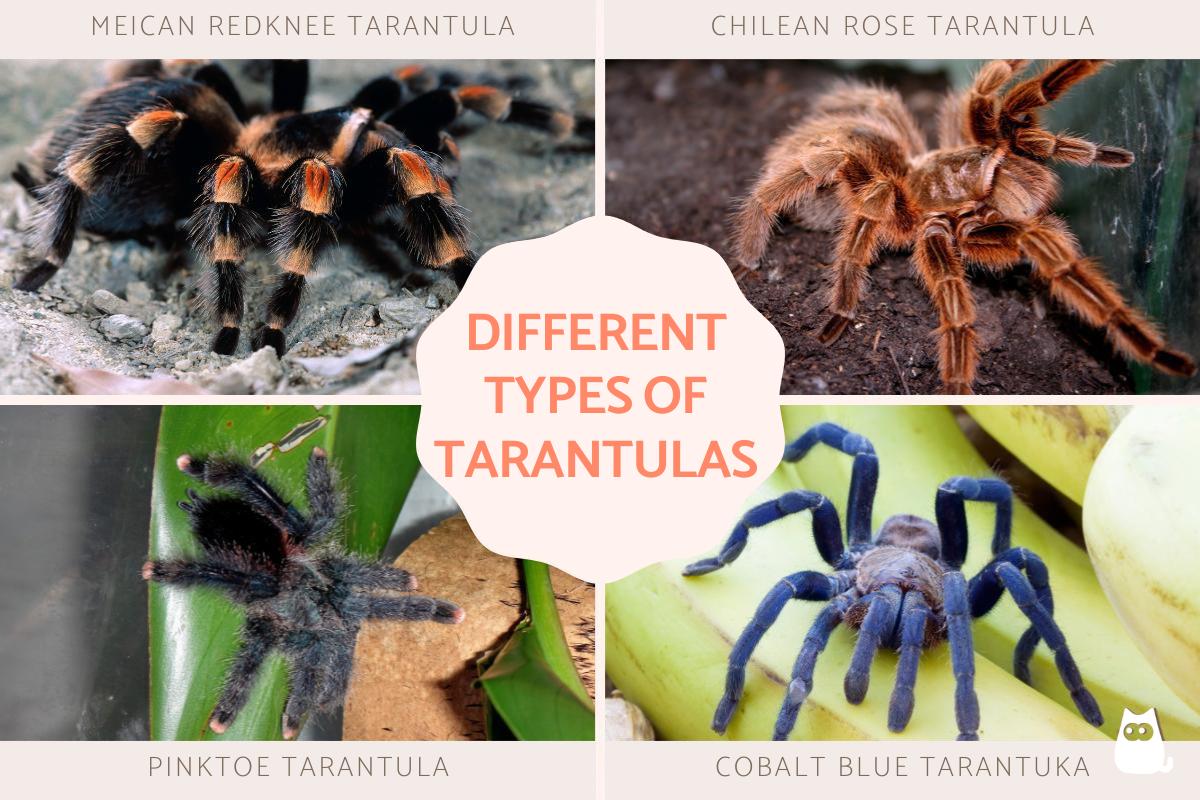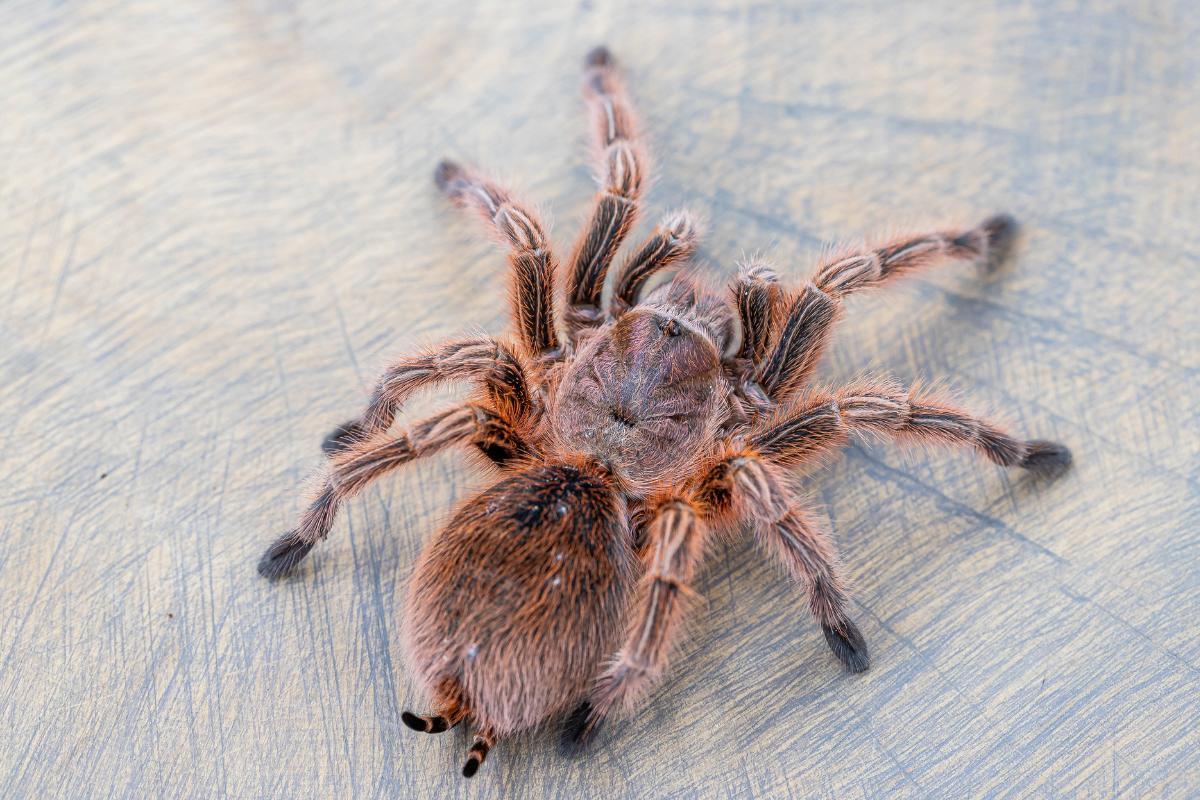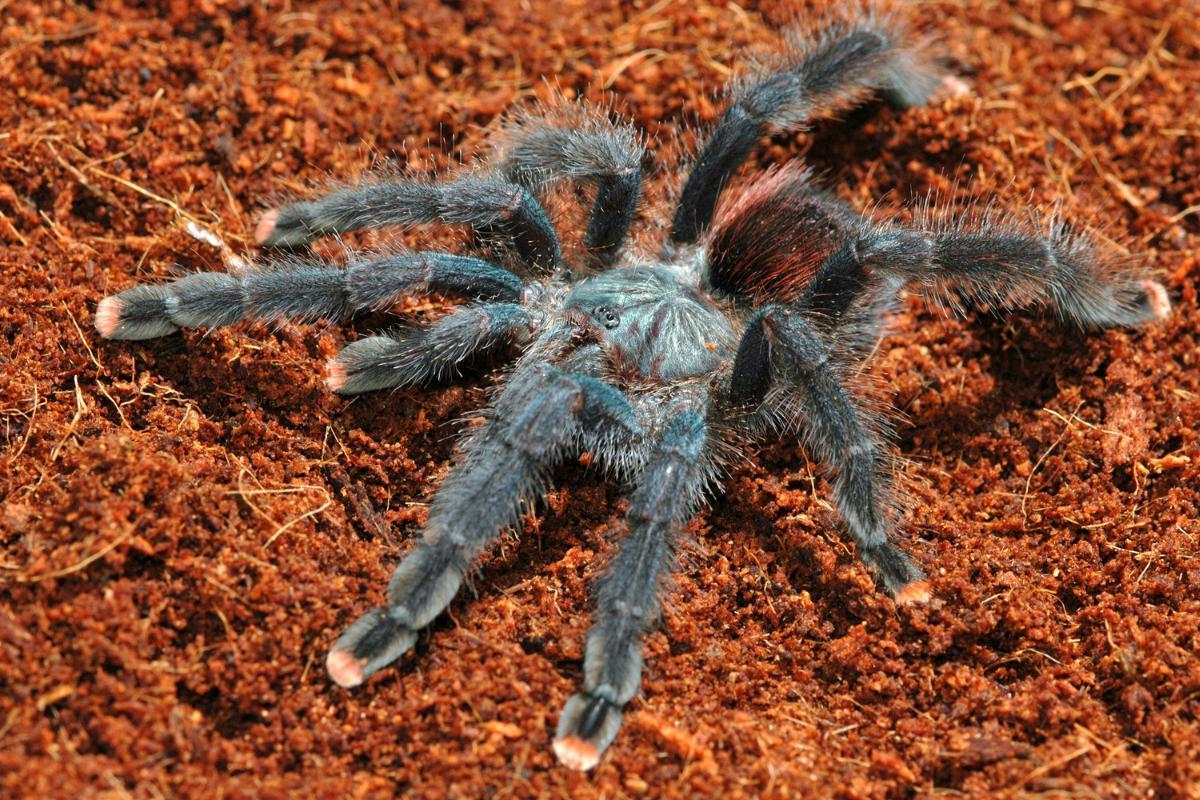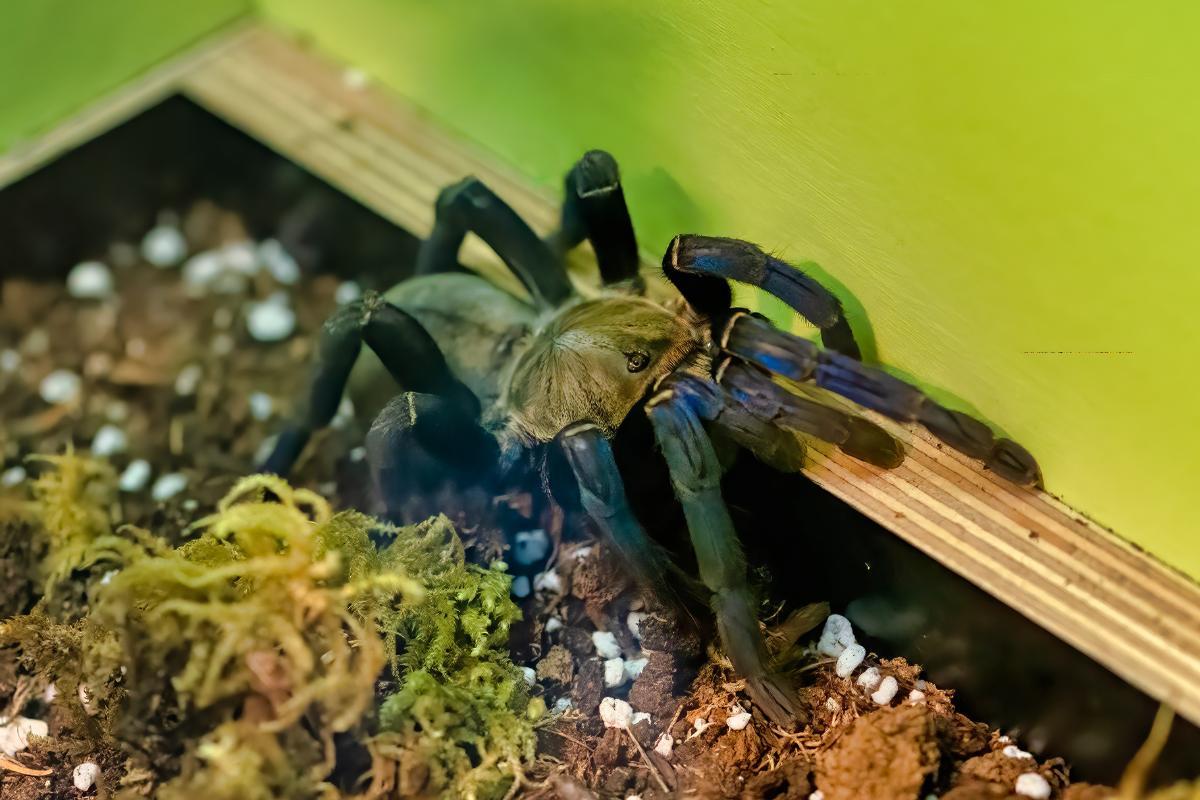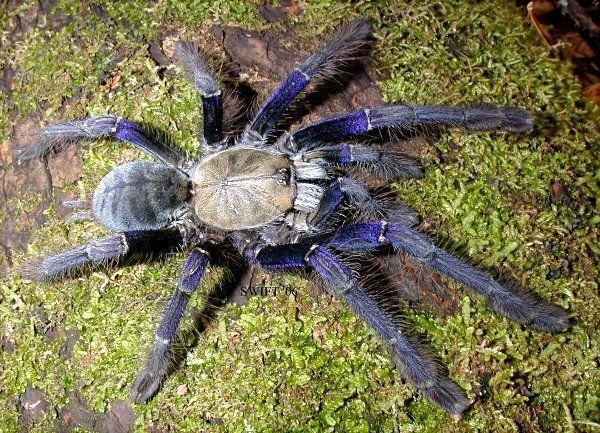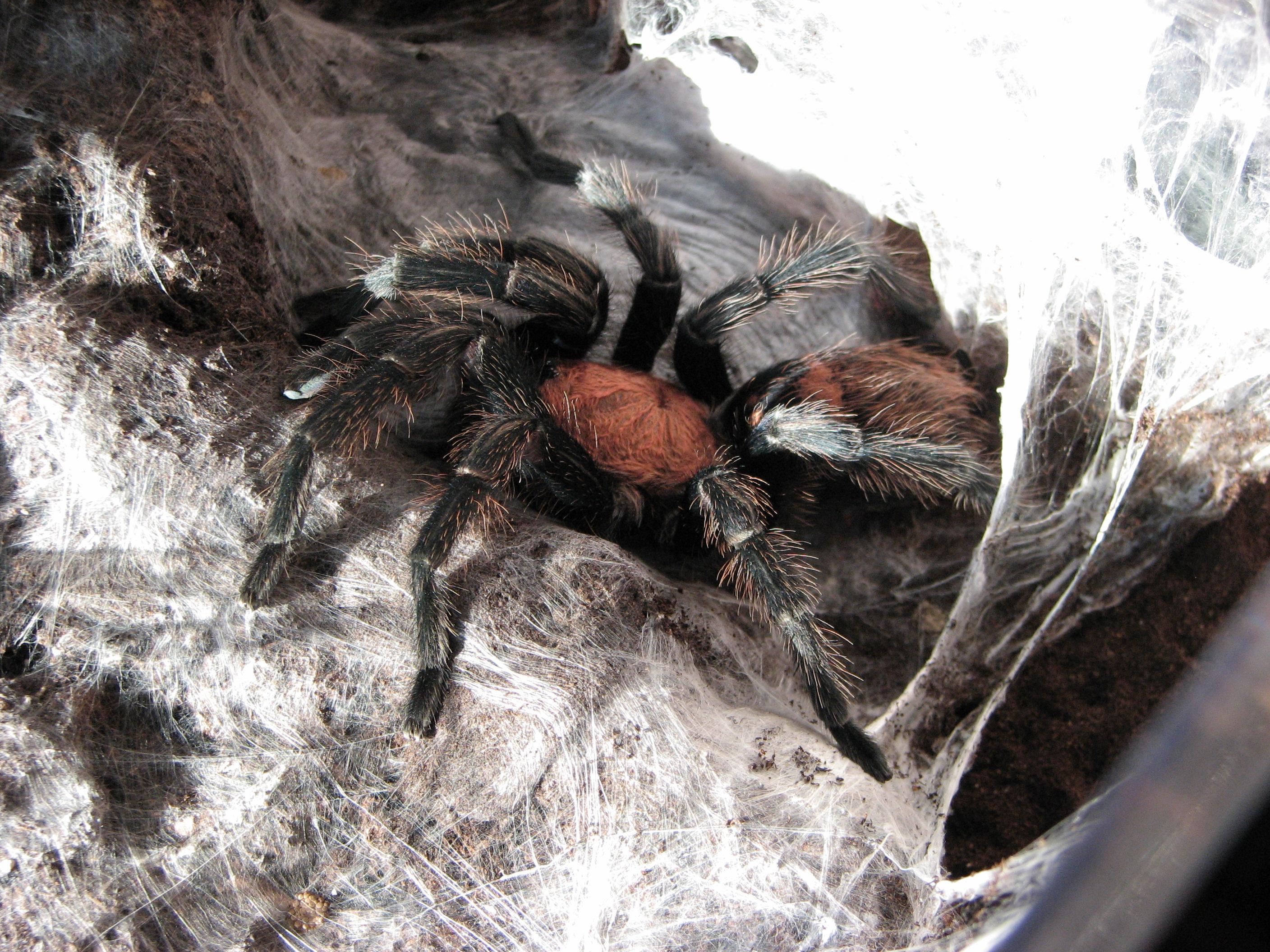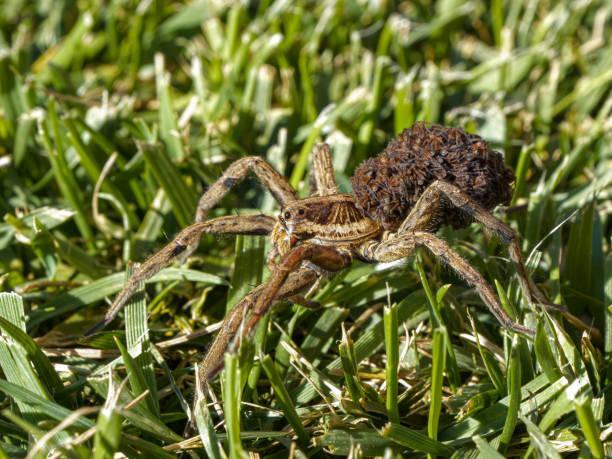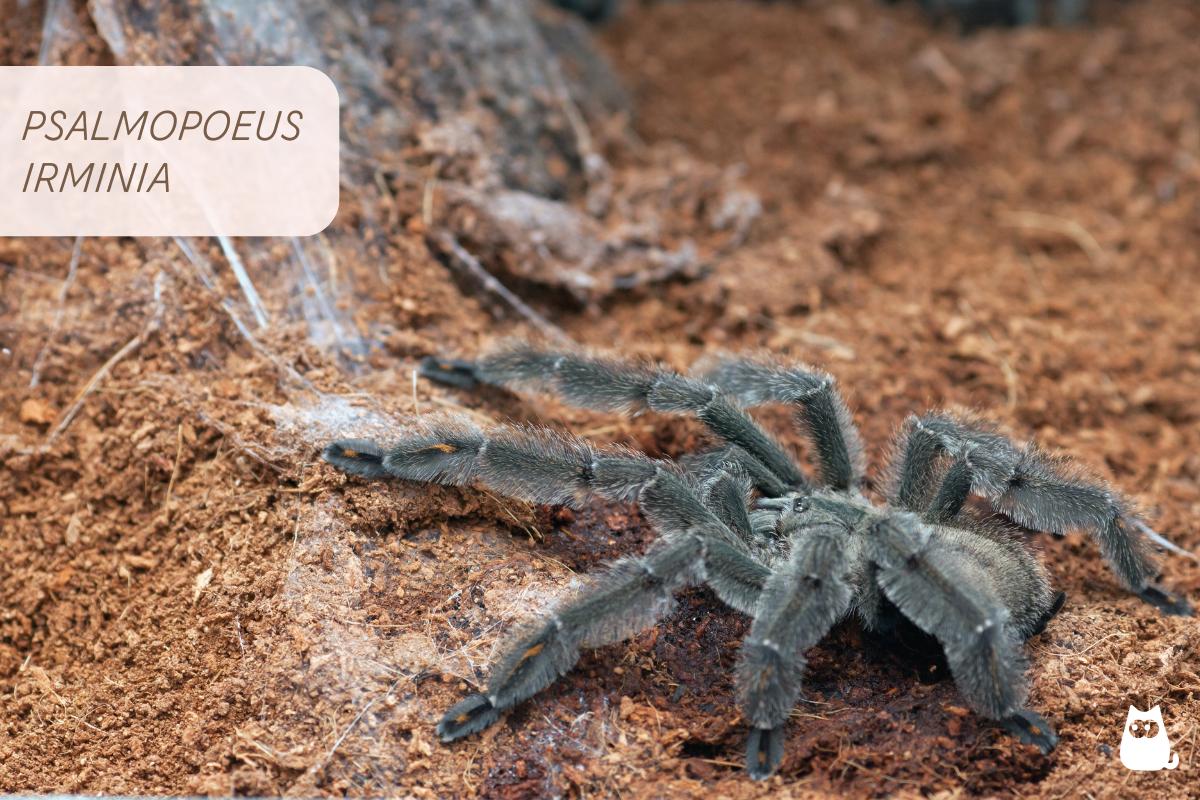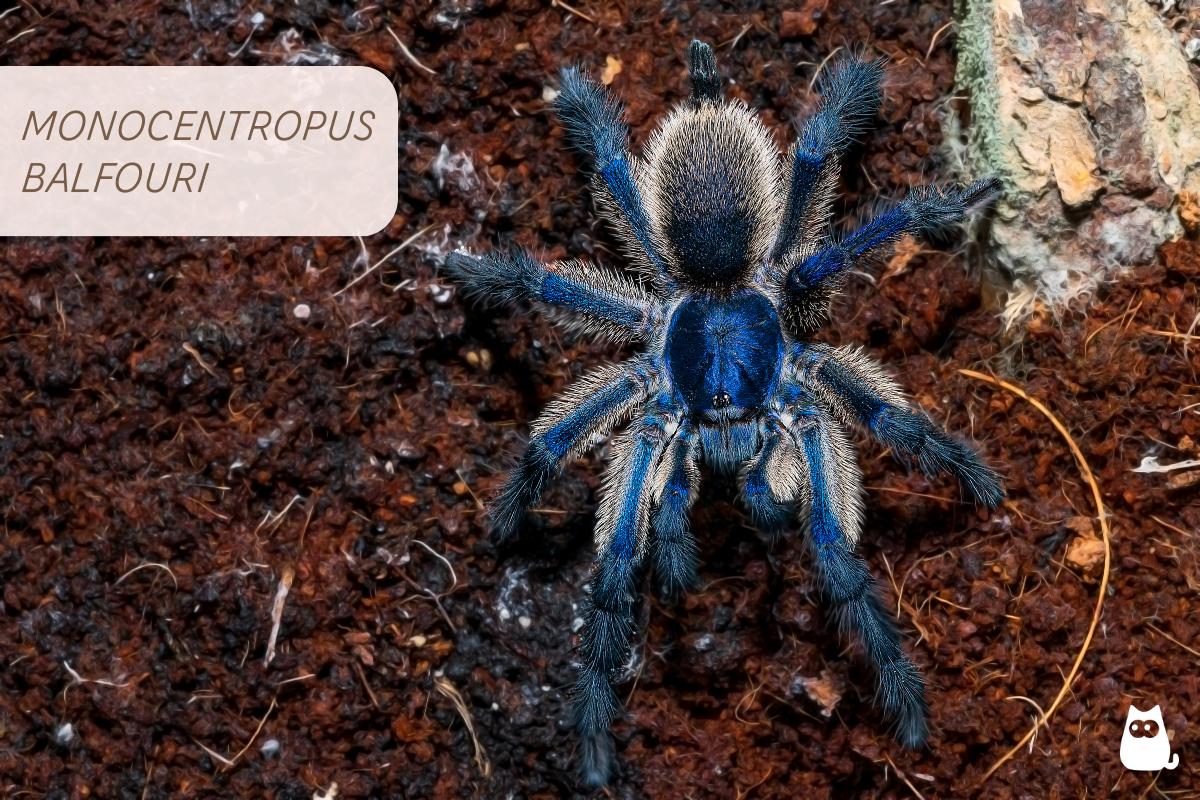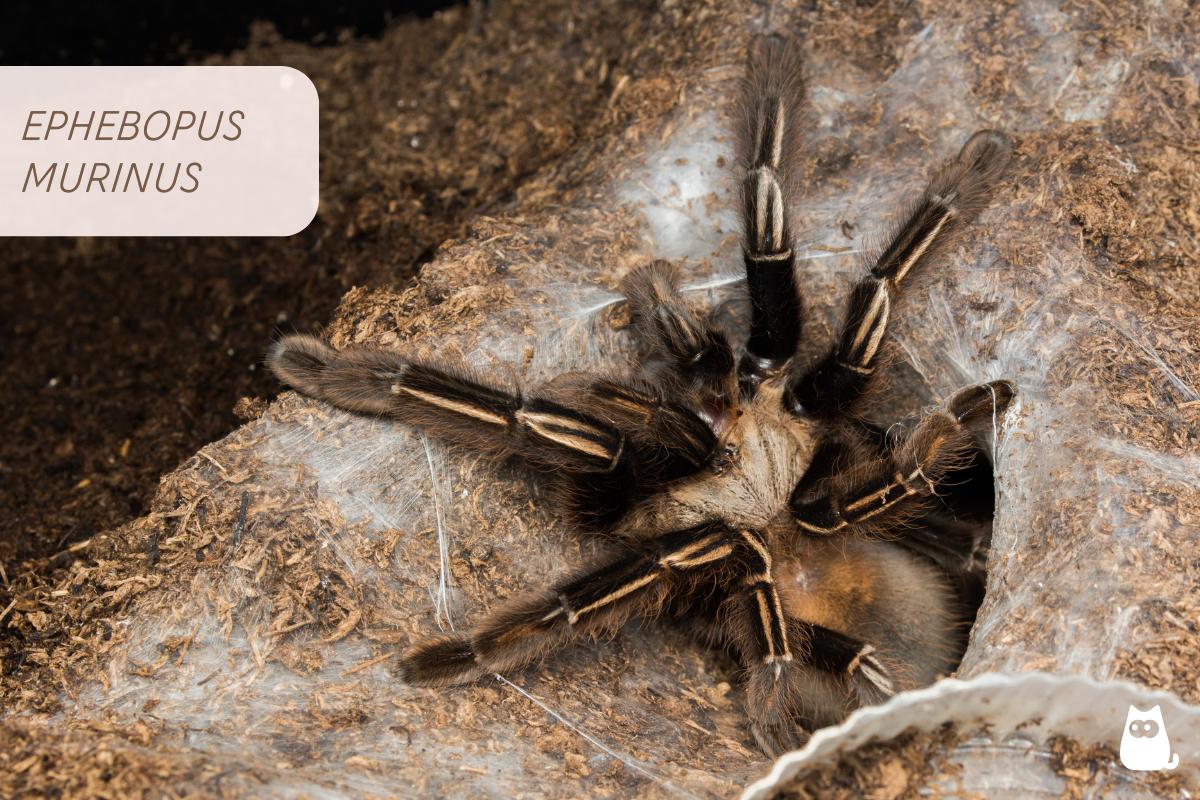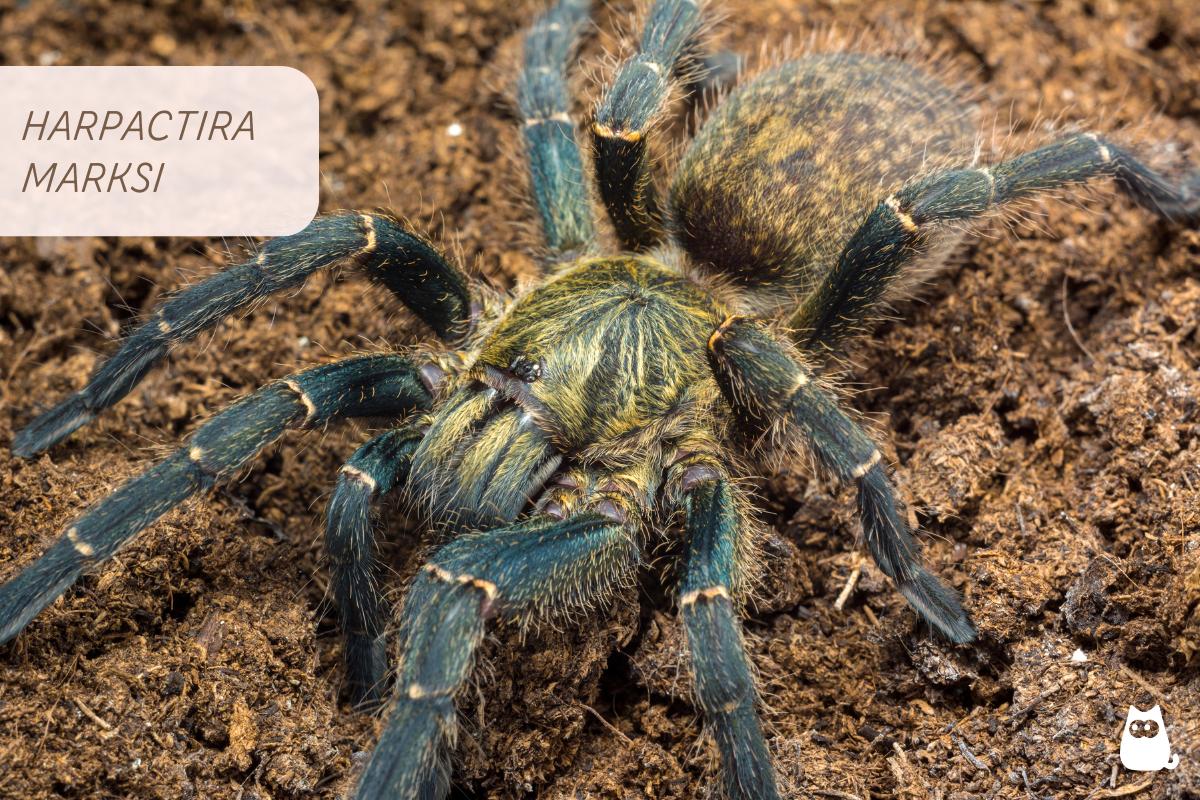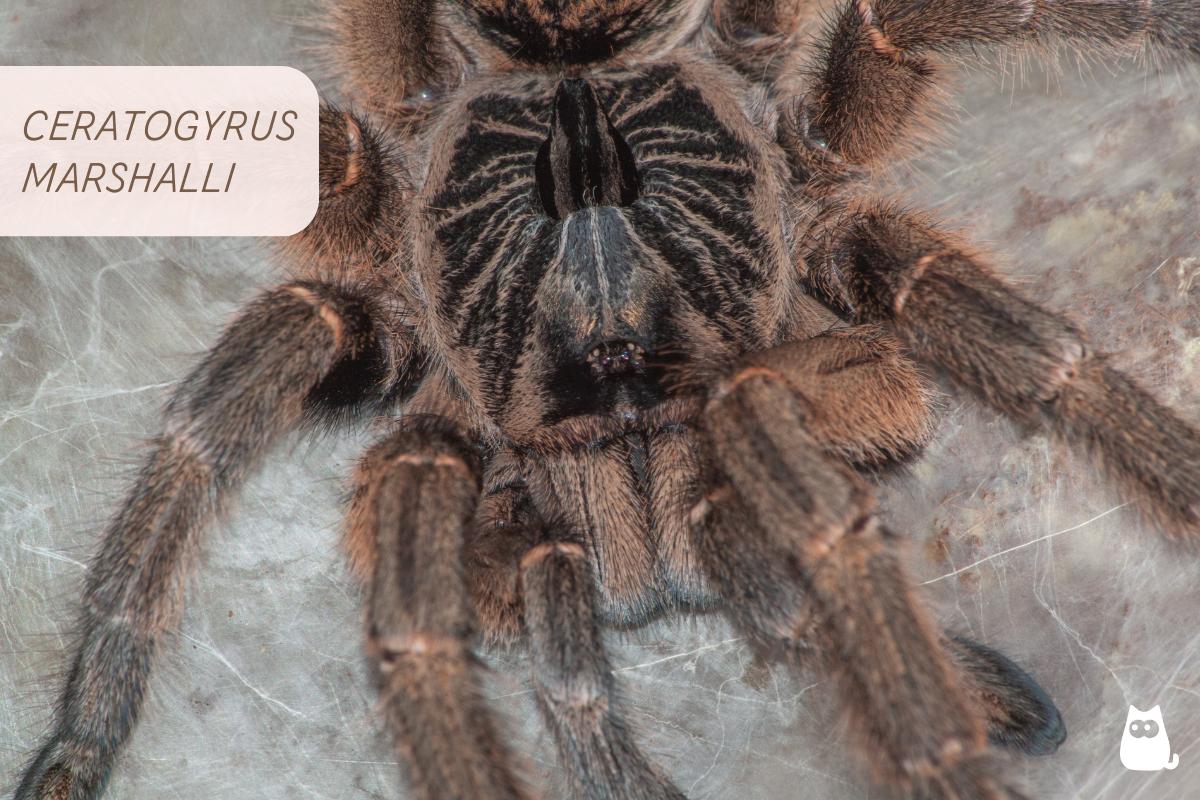Types of Tarantulas


Tarantulas are types of spider of the family Theraphosidae which have certain defining characteristics. These include their size since they are some of the bulkiest spiders in terms of size and weight. There are spiders of other families which may have a larger leg span, but they will weigh less than the largest tarantula. This honor goes to the Goliath birdeater (Theraphosa blondi) that can be found in rainforests of South America. Not all tarantula species live in these humid areas. They can equally inhabit arid desert areas, making them a very adaptive arachnid.
To better understand the diversity of these spiders, AnimalWised shares 20 types of tarantulas with photos of each species to see how they compare. We can't present all kinds of tarantulas since there are a thousand known to science, with yet more still to be discovered.
- Goliath birdeater (Theraphosa blondi)
- Mexian redknee tarantula (Brachypelma smithi)
- Costa Rican zebra tarantula (Aphonopelma seemanni)
- Chilean rose tarantula (Grammostola rosea)
- Indian ornamental tree spider (Poecilotheria regalis)
- Pinktoe tarantula (Avicularia avicularia)
- Cobalt blue tarantula (Haplopelma lividum)
- Singapore blue (Lampropelma violaceopes)
- Costa Rican tiger rump (Davus fasciatus)
- Tarantula wolf spider (Lycosa tarantula)
- Other types of tarantulas
Goliath birdeater (Theraphosa blondi)
Also known as the Goliath tarantula, the Goliath birdeater (Theraphosa blondi) is the largest type of tarantula in the world. In fact, they are the largest spider in the world in terms of mass. While they also have a very large leg span, there are spiders with a slightly large leg span. Still, we'd probably bet on the Goliath birdeater if they were ever pitted against each other.
Male and female tarantulas are sexually dimorphic, with the Goliath birdeater being no exception. Females are typically much larger than males. Not only do they differ in size, but the female can live up to 25 years, but males typically live only 3-6 years after reaching maturity.
The habitat of the goliath birdeater is mainly in the tropical rainforests of the Amazon basin. This includes countries such as Brazil, Venezuela, Guyana and Suriname. They are mainly nocturnal and live in deep burrows. They usually dig their burrows under a log or near a similar piece of protection. Their size means they can cause a painful nip if they were to bite us, but their venom is not likely to kill a human.
The diet of the giant birdeater is varied, including insects such as crickets and cockroaches, as well as invertebrates such as frogs and lizards. Their name is slightly misleading in that they do not normally consume birds. A famous engraving from the 19th century depicts the spider in the act of eating a hummingbird, but evidence of bird eating in this species is rare.
To kill their prey, they inject their venom which can liquify their internal organs. While they do not usually use them for prey, they can shoot stinging hairs at predators which they use for defense.
Learn more about their behavior as we ask are tarantulas dangerous?

Mexian redknee tarantula (Brachypelma smithi)
The Mexican redknee tarantula (Brachypelma smithi) is famous for its striking colors, especially the orange or red stripes on its legs as seen in the photo below. These create a beautiful contrast with their velvety black body. As their name suggests, they live in the deserts and semi-arid areas of western Mexico, taking refuge in burrows that they dig to protect themselves from both predators and the extreme heat. Females can live up to 30 years, making it a long-lived species.
Similar to most types of tarantulas, the Mexican redknee is a solitary and opportunistic hunter. Although its venom is weak to humans, its urticating hairs can cause severe irritation to the skin and eyes. It feeds primarily on insects such as crickets, but occasionally consumes small rodents or lizards.

Costa Rican zebra tarantula (Aphonopelma seemanni)
Sometimes known as the striped-knee tarantula, the Costa Rican zebra tarantula (Aphonopelma seemanni) is easily recognizable by its legs with black and white bands, as depicted in the photo. Their name derives from the fact this resembles the stripes of a zebra. It is native to Central America , especially Costa Rica and Nicaragua, living in areas with loose soils where it digs deep burrows.
It can measure up to about 5" (13 cm), including leg span. Like other types of tarantulas, females can live more than 20 years. Although it can be shy, the zebra tarantula is fast and can exhibit defensive behaviors if it feels cornered.
The zebra tarantula's diet consists mainly of insects, but it can also hunt small vertebrates. They are most active at night when they emerge from their burrows to hunt. Their venom is not their primary defense mechanism, instead they prefer to use their stinging hairs.

Chilean rose tarantula (Grammostola rosea)
Also known as the Chilean fire tarantula, the Chilean rose tarantula (Grammostola rosea) is one of the most resistant tarantula species. This is because they are capable of surviving in the harsh conditions of the very hot deserts and semi-arid areas of Chile, Bolivia and Argentina. Its body has a pinkish tone that provides its name.
These tarantulas are known for their ability to go long periods without eating. This allows them to survive in their native habitats where food may be scarce, such as desert and scrub areas.
They have a very calm demeanor, making them a target for the pet trade, being commonly exported to other countries. They feed on insects such as crickets and cockroaches, but can also catch small mammals and reptiles. They are most active at night and use their size and strength to catch larger prey.

Indian ornamental tree spider (Poecilotheria regalis)
The Indian ornamental tree spider (Poecilotheria regalis) is a type of tarantula, despite the name. It is one of the most striking species due to its black and white color pattern. The photo also despicts the yellow coloration which can present on its legs. It is arboreal, meaning it spends most of its life in trees. Native to the rainforests of India, this species is very fast and tends to be more aggressive than other types of tarantulas.
Unlike other tarantula species, Poecilotheria regalis has a more potent venom. Although it is not lethal to humans, it can cause intense pain and discomfort. This species feeds mainly on large insects and occasionally small birds or rodents, using its speed to ambush its prey. Its ability to climb and jump makes it an effective hunter.
Since the nomenclature can be confusing, we explain the difference between a tarantula and a spider.

Pinktoe tarantula (Avicularia avicularia)
The South American pinktoe or pinktoe tarantula (Avicularia avicularia) is native to South America and certain Caribbean islands. The female reaches about 5" (13 cm) in length with the males being smaller. It is characterized by the pink tips of its legs, a stark contrast to its dark body. It is also an arboreal species that lives in the dense vegetation of tropical forests. It builds webs in the hollows of trees or between branches to take shelter.
This species is relatively calm and has a weak venom. Unlike many terrestrial tarantulas, the pinktoe tarantula is not so quick to bite. They generally prefer to escape by climbing to high places. It feeds on insects and sometimes hunts small birds or mammals in its environment.

Cobalt blue tarantula (Haplopelma lividum)
Native to Southeast Asia, the cobalt blue tarantula is especially common in Thailand and Burma. As you can see in the photo below, it is known for its deep metallic blue color, although this bright coloration is mainly seen on the underside of its legs. Its body is mostly dark brown or black. It is an aggressive and territorial tarantula that lives in deep burrows.
Despite its defensive temperament, the cobalt blue tarantula is very popular among hobbyists due to its exotic coloration. Its venom is not lethal to humans, but can cause acute pain. It feeds primarily on large insects and small rodents that stray too close to its burrow.
You can get to know more about tarantula body parts with our article explaining the anatomy of a spider.
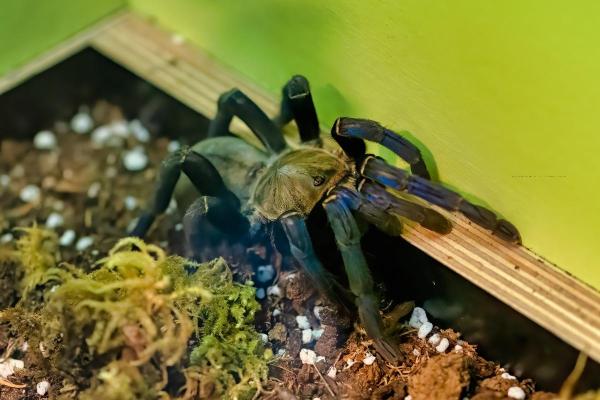
Singapore blue (Lampropelma violaceopes)
Simply known as the Singapore Blue, this tarantula is famous for its striking blue coloration on its body and legs. This arboreal species is found in the rainforests of Singapore, Malaysia and Indonesia. The blue color of this kind of tarantula helps it camouflage itself among vegetation, allowing it to ambush its prey with ease. The male is usually less vibrant than the female, another example of sexual dimorphism in this animal.
Although its venom is not dangerous to humans, this species is very fast and can display defensive behaviors if it feels threatened. Its diet includes large insects and occasionally small rodents or birds.

Costa Rican tiger rump (Davus fasciatus)
Although native to its namesake, the Costa Rican tiger rump (Davus fasciatus) can also be found in Panama. Its name is derived from the stripes that decorate its body and legs. These somewhat resemble a tiger. The species lives in burrows or under rocks where it spends most of its time hidden to protect themselves against predators.
Despite its relatively small size 4.7" (12 cm) compared to other types of tarantula, its defensive behavior makes it an effective hunter. It feeds on insects such as crickets, cockroaches and locusts, as well as on small vertebrates. Although its venom is not dangerous to humans, its hairs can cause irritation if it feels cornered.
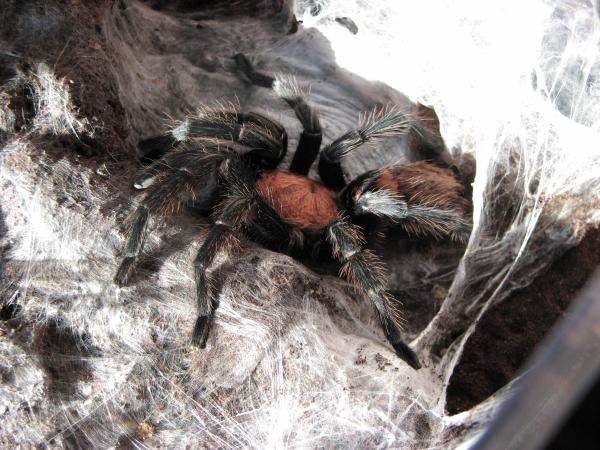
Tarantula wolf spider (Lycosa tarantula)
Rather than being a type of true tarantula, the tarantula wolf spider (Lycosa tarantula) is given a special mention since it is believed to be the origin of the word ‘tarantula’. Native to the Mediterranean regions of Europe, it is particularly common in Italy, Spain and Greece.
They are a type of wolf spider, meaning they belong to the family Lycosidae. They can measure up to 2.7" (7 cm), being generally smaller than true tarantula species. Their brown, grey or black coloring allow them to camouflage themselves in dry or sandy terrain. They also dig burrows to hide and capture prey. For this reason, their habitat includes dry and warm soils. They are nocturnal, hunting at night without webs, but ambushing prey like tarantulas.
Females take care of their young, carrying them on their abdomen until they are big enough to fend for themselves. Although their venom is not dangerous to humans, their bite can cause localized pain. It was once believed that their bit caused a phenomenon known as tarantism. Victims would become hysteric and could only be cured by dancing. This is likely not due to spider bites, but the true cause currently remains unknown.
Discover more with our article asking are wolf spiders venomous?

Other types of tarantulas
As we have mentioned, there are over a thousand species of tarantulas. To provide a better idea of their diversity, we mention some more tarantula species:
- Antilles pinktoe tarantula (Caribena versicolor)
- Venezuelan suntiger (Psalmopoeus irminia )
- Socotra Island blue baboon tarantula (Monocentropus balfouri)
- Giant baboon spider (Hysterocrates gigas)
- Fringed ornamental (Poecilotheria ornata)
- Peacock tarantula (Poecilotheria metallica)
- Skeleton tarantula (Ephebopus murinus)
- Golden blue-legged baboon spider (Harpactira pulchripes)
- Cape copper baboon tarantula (Harpactira cafreriana)
- Straight horned baboon tarantula (Ceratogyrus marshalli)
While tarantulas are large, they are usually not considered lethal to humans. Their bite can be very painful and some venom can have serious effects. However, they are only usually lethal to other animals. To best ensure the health of a pet, find out more about what to do if your dog is bitten by a spider.
If you want to read similar articles to Types of Tarantulas, we recommend you visit our Facts about the animal kingdom category.
- Biswas, A., & Karanth, K. P. (2024). All about being old and shooting hairs: clade age and urticating hair explain the patterns of diversification in tarantulas. Evolution, 78(1), 146-159.
- Foelix, R. (2010). Biology of spiders. Oxford university press.
- Janowski-Bell, M. E., & Horner, N. V. (1999). Movement of the male brown tarantula, Aphonopelma hentzi (Araneae, Theraphosidae), using radio telemetry. Journal of Arachnology, 503-512.
Types of Tarantulas photos
